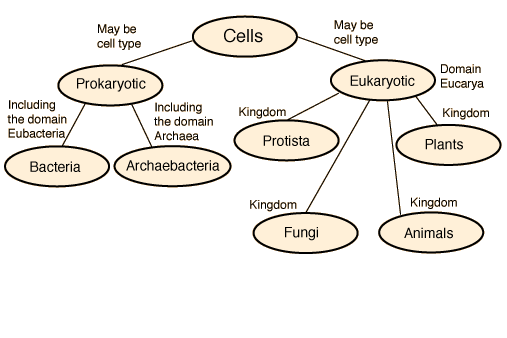The Eukaryotic Cell

This sketch of a eukaryotic cell is modeled after illustrations in Hickman, et al. and Audesirk& Audesirk. It is intended to show the types of organelles in cells, although no single cell is expected to have all these organelles.
A typical quoted number for cells in the human body is 300 trillion or 3 x 1014.
| Cell Types |
Cell Concepts
Reference
Audesirk & Audesirk
Ch 4
Reference
Hickman, Roberts, Larson
| HyperPhysics***** Biology | R Nave |
